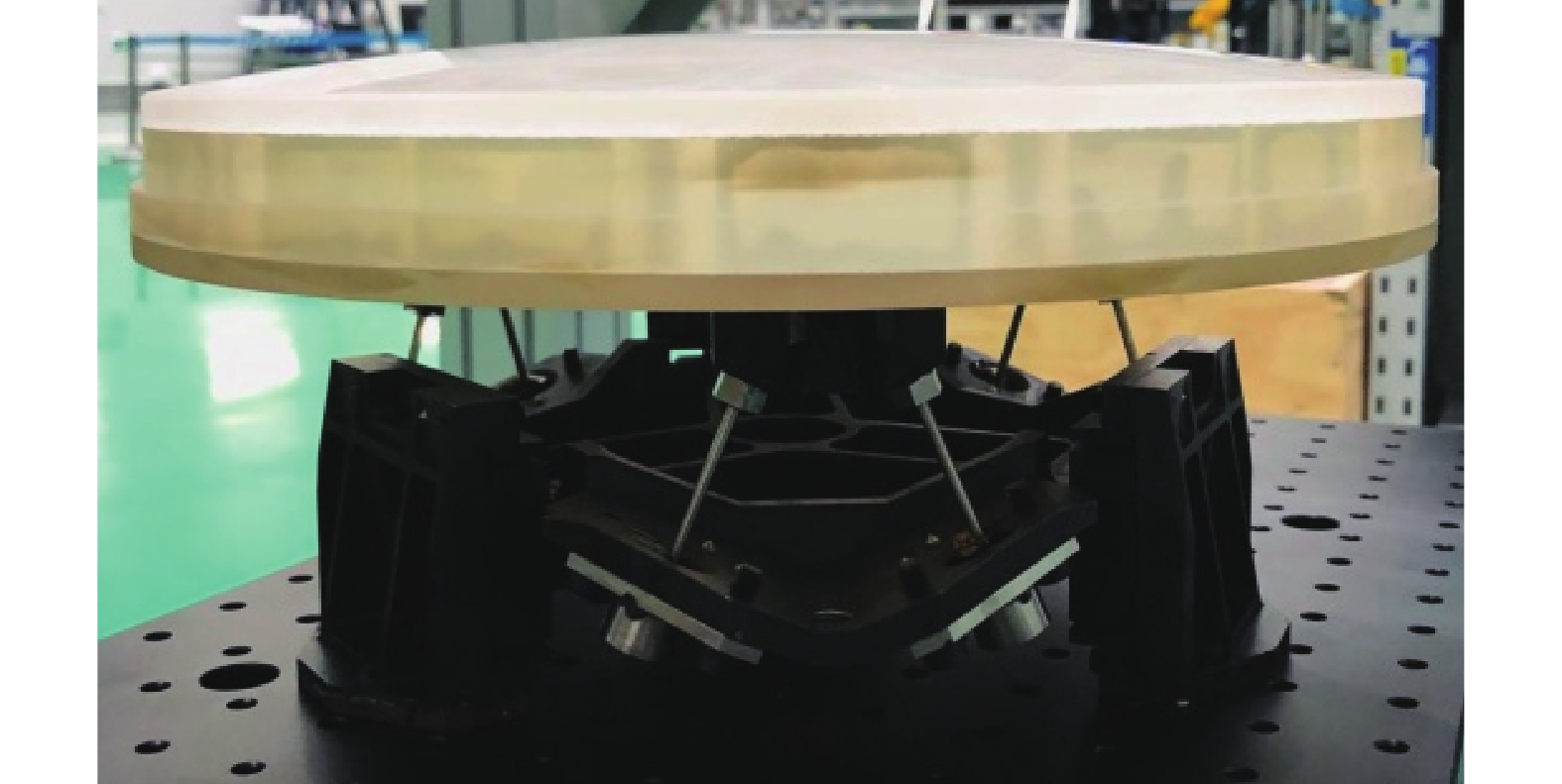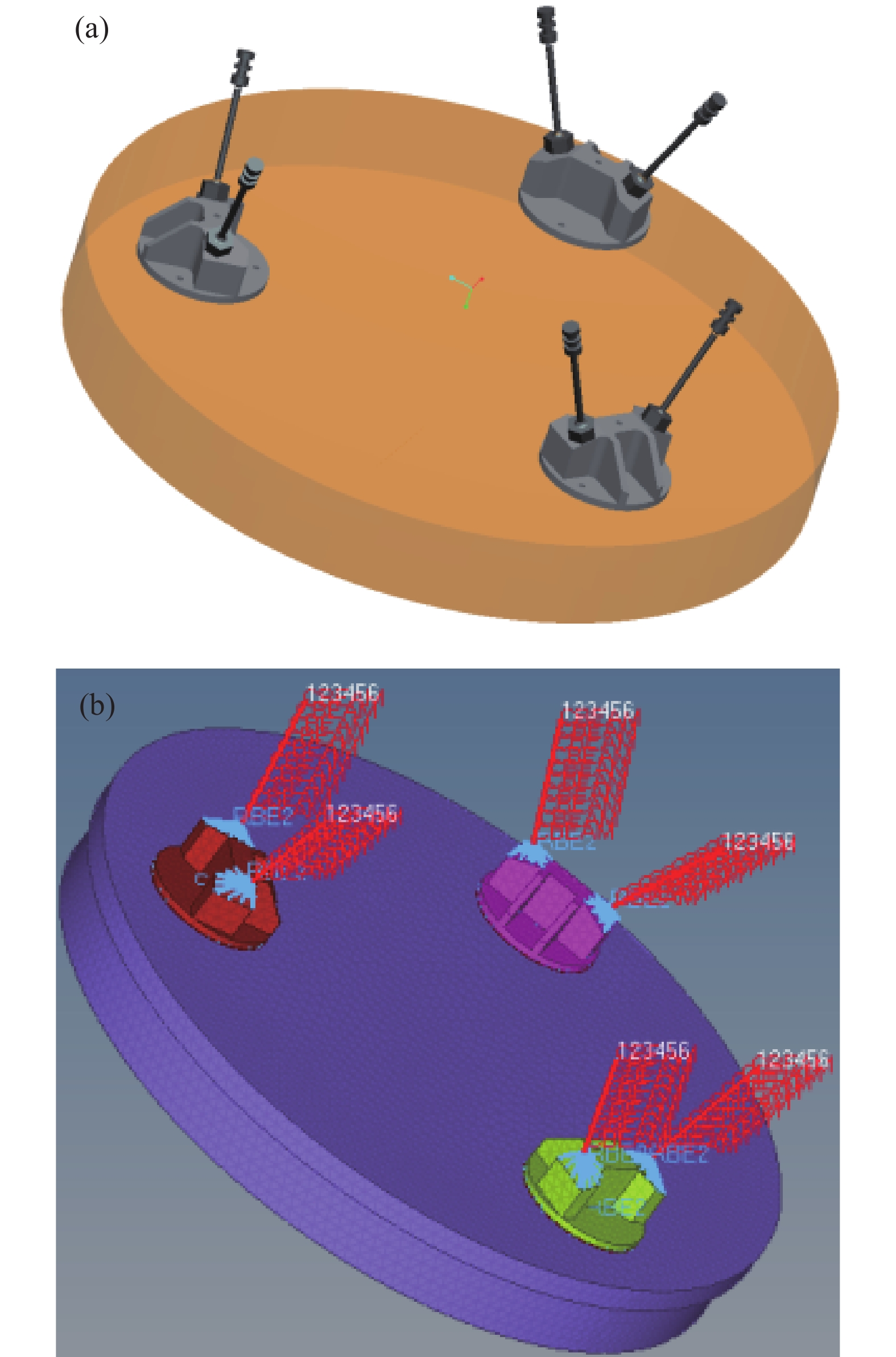-
随着空间光学遥感器地面像元分辨率越来越高,遥感器不断朝着更长焦距、更大口径的方向发展,随之带来了光学载荷质量的大幅增加,促进了包括高轻量化率反射镜及其支撑在内的光机结构设计技术的快速发展[1-3]。
针对大口径光学遥感器高轻量化率设计、高稳定支撑的需求,反射镜普遍采用基于运动学原理的柔性离散支撑技术[4-6]。柔性支撑式反射镜为了有效卸载装配应力,一般采用光学胶连接反射镜与支撑结构[7-8]。胶接具有结构紧凑、设计灵活、安全可靠的优势[9],但光学胶在固化的过程中由于体积收缩会不可避免地带来应力,主要体现在胶斑粘接区域会产生对反射镜的收缩力,同时随着环境温度的变化,较大膨胀系数的光学胶还会产生多余的附加应力[10-11]。
光学胶接产品的胶缩特性显然对于获得良好的反射镜面形不利。为了去除或降低胶接应力对反射镜的面形影响,当前普遍采用随机振动进行消应力,其原理是通过对产品加载激励实现胶接应力的重新分布,使产品到达区域稳定状态。但是振动试验手段相对单一、效率低,往往需要多次力学试验达到消除应力的目的[12]。
文中针对某高轻量化ULE次镜,采用背部直粘的柔性离散支撑技术进行了设计,并采用光学胶实现结构与光学件的连接。针对放气试验带来的反射镜面形下降问题,通过消应力振动与热浸泡试验相结合的方式使反射镜面形达到光学设计要求。
-
图1为次镜支撑方案,三对Bipod杆首先与支撑Pad螺接,周向均布的三个支撑Pad通过光学胶与次镜进行无应力装配,从而实现次镜的高力热稳定支撑。
-
根据光学系统设计要求,次镜口径Φ280 mm,反射面为凸二次双曲面,要求达到PV≤0.14λ、RMS≤0.014λ(λ=0.632 μm)的面形精度指标,图2为次镜光轴向上测试状态。
-
反射镜采用ULE蜂窝夹芯式构型实现高比刚度、高轻量化设计,面密度达38 kg/m2。ULE材料在20 ℃左右具有极低的热膨胀系数,温度稳定性好。次镜组件的各材料性能参数如表1所示。
Parameter Mirror Glue Pad Bipod rod Material ULE RTV Invar
4J32BTC4R Density/103 kg·m−3 2.21 1.50 8.87 4.45 Modulus/GPa 67 3.68 114 110 Coefficient of thermal expansion/10−6 K−1 0.03 252 0.03 9.0 Table 1. Parameters of material performance
-
采用Hypermesh软件建立次镜组件有限元仿真分析模型。其中,光学胶在胶层厚度方向上按照三层节点进行网格划分,实现胶斑的精细化建模,从而可以模拟胶的剪切、拉伸和扭转[13]。边界条件均按照三对Bipod杆末端的六个自由度固支进行设置,支撑结构及对应的有限元模型如图3所示。
-
次镜背部与bipod支撑结构之间一般设计有0.5~1.0 mm厚度的光学胶实现产品粘接,利用胶层特性抵抗剪切和拉伸。胶固化收缩涉及材料性质的变化,目前的商用有限元分析软件尚不支持此类计算。文中采取温度载荷法模拟其固化收缩效应[14]。具体方法为:通过温度载荷法修改胶的热膨胀系数为温度下降1 ℃时胶的收缩率,而其他材料的热膨胀系数均设置为零,从而间接仿真胶固化收缩过程中产生的应力及其影响[15],胶收缩的体积比计算公式为:
式中:V′为胶固化收缩后的体积;V为收缩前的体积;ω为收缩体积比,参考固化试验结果一般取99%[15];α为考虑收缩时胶的等效热膨胀系数;T为温度变化,文中设置为−1℃;R为胶斑的半径;t为胶斑的厚度。
根据公式(1)计算可知:
将计算得到的α参数作为胶层的热膨胀系数,在Hypermesh中施加1 ℃的均匀温升,即可等效仿真胶固化过程中收缩1%对次镜面形的影响,分析结果如表2所示。结果表明,胶收缩对次镜面形的影响为RMS小于λ/1000,可以忽略不计。
Glue spot/mm Shape of surface Deformation 1 RMS<0.001λ 
Table 2. Analysis of adhesive curing
-
考虑到次镜在轨的控温精度为(20±1) ℃,文中分析20 ℃均匀温升2 ℃时对次镜面形的影响。约束Bipod杆的末端六个自由度,仿真结果如表3所示。可以看出,ULE材料的低膨胀系数匹配Bipod柔性支撑使得反射镜具有良好的温度适应性,均匀温升2 ℃对次镜面形的影响小于λ/1000,可以忽略不计。
Condition Shape of surface Deformation 2 ℃ temperature rise RMS<0.001λ 
Table 3. Temperature effect analysis
-
在支撑Pad粘接前后分别通过干涉仪对次镜的面形进行测试,评估粘接固化过程对面形的影响。测试结果如表4所示,可以看出胶固化收缩对次镜面形的影响在λ/1000,与仿真分析结果一致。
Condition Shape of surface Deformation Without pad RMS=0.012λ 
With pad RMS=0.013λ 
Table 4. Influence of adhesive curing
-
为了确保光学部组件的真空环境适应性,次镜在完成支撑Pad粘接固化后,开展环境温度20 ℃、真空度1.3×10−3 Pa的真空放气试验。经历72 h真空放气试验后,次镜的面形RMS大幅下降至0.020λ,如表5所示。试验表明,真空放气会导致该光学胶内应力的重新分布,进而对面形产生不利影响。
Condition Shape of surface Deformation Outgassing experiment RMS=0.020λ 
Table 5. Effect of vacuum degassing
-
光学件在完成胶接后普遍安排去应力振动试验,输入量级包络部组件验收级力学条件。表6为消应力振动试验后的次镜面形复测结果,RMS达到0.019λ(λ=0.632 μm),结果表明消应力振动对面形改善仅为λ/1000,与光学系统分配的次镜组件面形精度至少为0.014λ相差较远。
Condition Shape of surface Deformation
Total root mean square of 9 grmsRMS=0.019λ 
Table 6. Stress relieving vibration condition and effects
-
热浸泡(Thermal soak)是指将光机部件放置于稳定的温度场环境内(标准大气压)充分静置,释放光学胶固化应力的方法。在消应力试验后依次开展40 ℃和60 ℃的热浸泡试验,次镜的面形得到逐步改善,次镜组件实测的面形变化如表7所示,组件的RMS达到0.014λ,满足光学系统设计要求。
Condition Shape of surface Deformation 40 ℃ (72 h) RMS=0.015λ 
60 ℃ (72 h) RMS=0.014λ 
Table 7. Hot soak test and its effects
-
试验结果表明:RTV光学胶固化收缩对次镜面形的影响与仿真吻合,基本可以忽略,但真空放气会对反射镜面形造成较大的不利影响。在分析原因的基础上开展了随机振动以及不同温度环境下的热浸泡试验。结果表明,随机振动消应力的方法对面形改善不明显(仅提升面形λ/1000),热浸泡试验对反射镜面形改善较为显著(提升面形5λ/1000),并最终使次镜的面形达到了光学设计要求的0.014λ。
-
针对某柔性支撑式次镜,分析了RTV光学胶固化收缩以及温度变化对次镜面形的影响。针对真空放气试验后次镜面形下降的问题开展了消应力振动及热浸泡试验。试验前后的面形测试结果对比表明,相比较随机振动试验,热浸泡试验可以有效降低该光学胶的内应力,且在允许的温度范围内,提高热浸泡试验的温度可以加速去应力进程。
Analysis and elimination of adhesive bonding force of flexible supported space mirror
doi: 10.3788/IRLA20210496
- Received Date: 2021-07-19
- Rev Recd Date: 2021-10-15
- Publish Date: 2022-05-06
-
Key words:
- space remote sensor /
- space mirror /
- flexible support /
- bonding stress
Abstract: The space optical remote sensor is developing in the direction of higher lightweight rate, but the traditional framing support is difficult to meet the requirement of the system. Bipod flexible support structure based on kinematics principle has good adaptability to mechanical and thermal environment, and has been more and more applied in mirror support of space optical remote sensor. In order to effectively remove the assembly stress, the Bipod flexible supporting structure is usually connected to mirror by optical glue. But there is inevitable shrinkage stress in the curing process of optical glue. In addition, the fluctuations of the ambient temperature and the thermal vacuum test could lead to additional force change, which will have an adverse impact on the shape of the mirror. In this paper, the influence of glue shrinkage on the surface shape of a Bipod flexible support secondary mirror assembly was analyzed. Aiming at the surface shape decline after vacuum deflation test, the combination of stress relief and hot immersion was used to effectively solve the surface shape decline problem, so as to provide technical support for the space environmental application of this kind of optical glue.






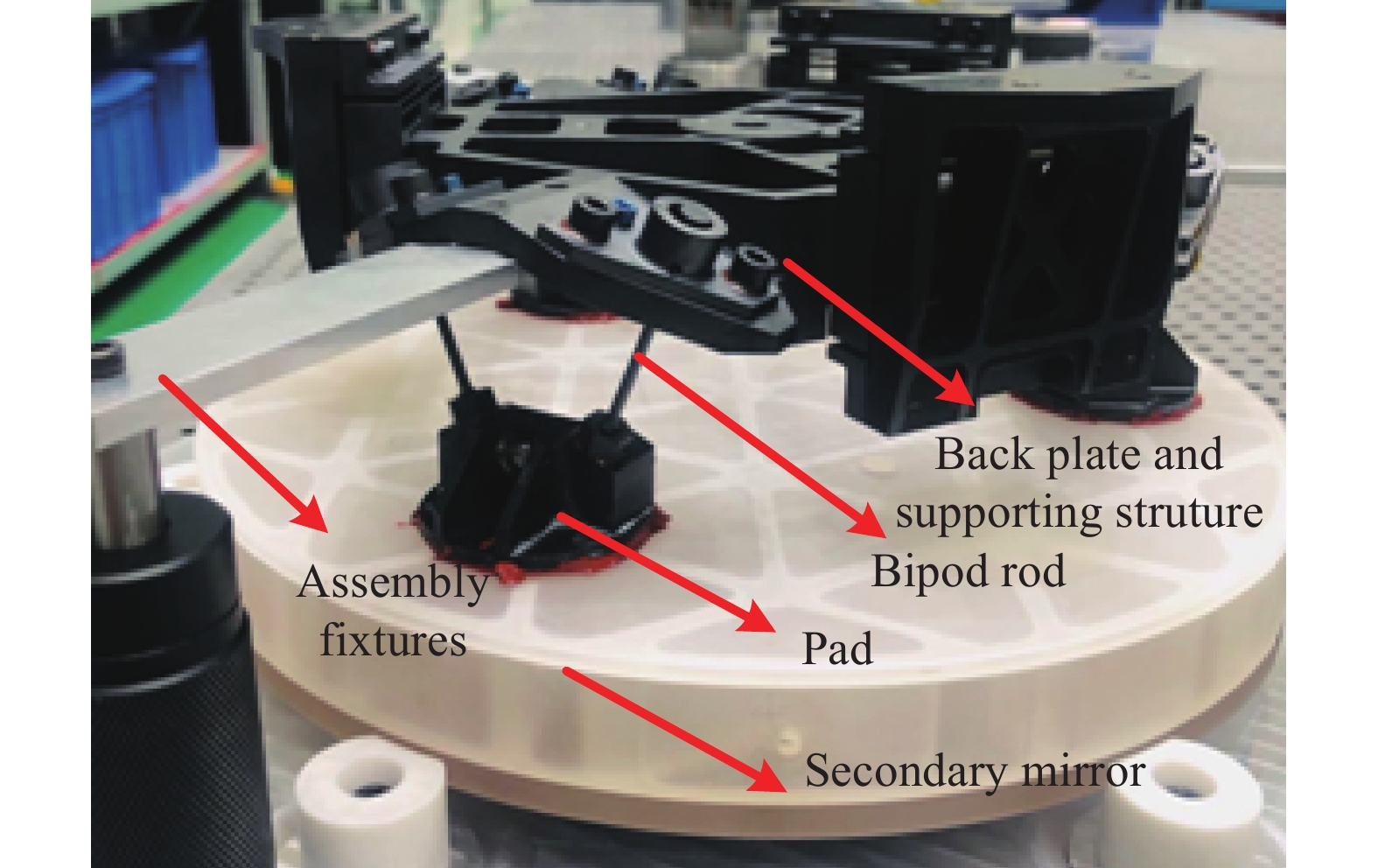



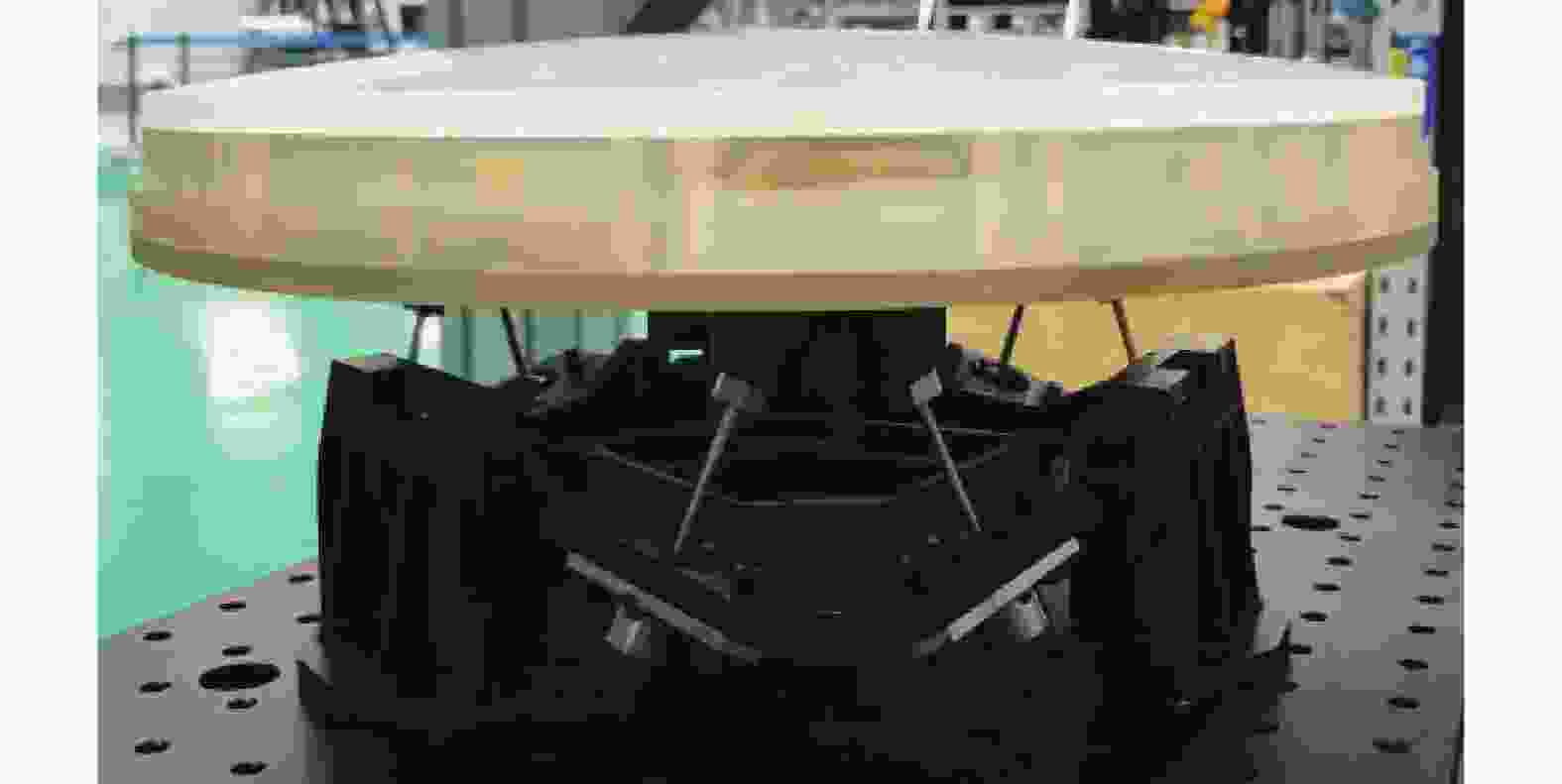
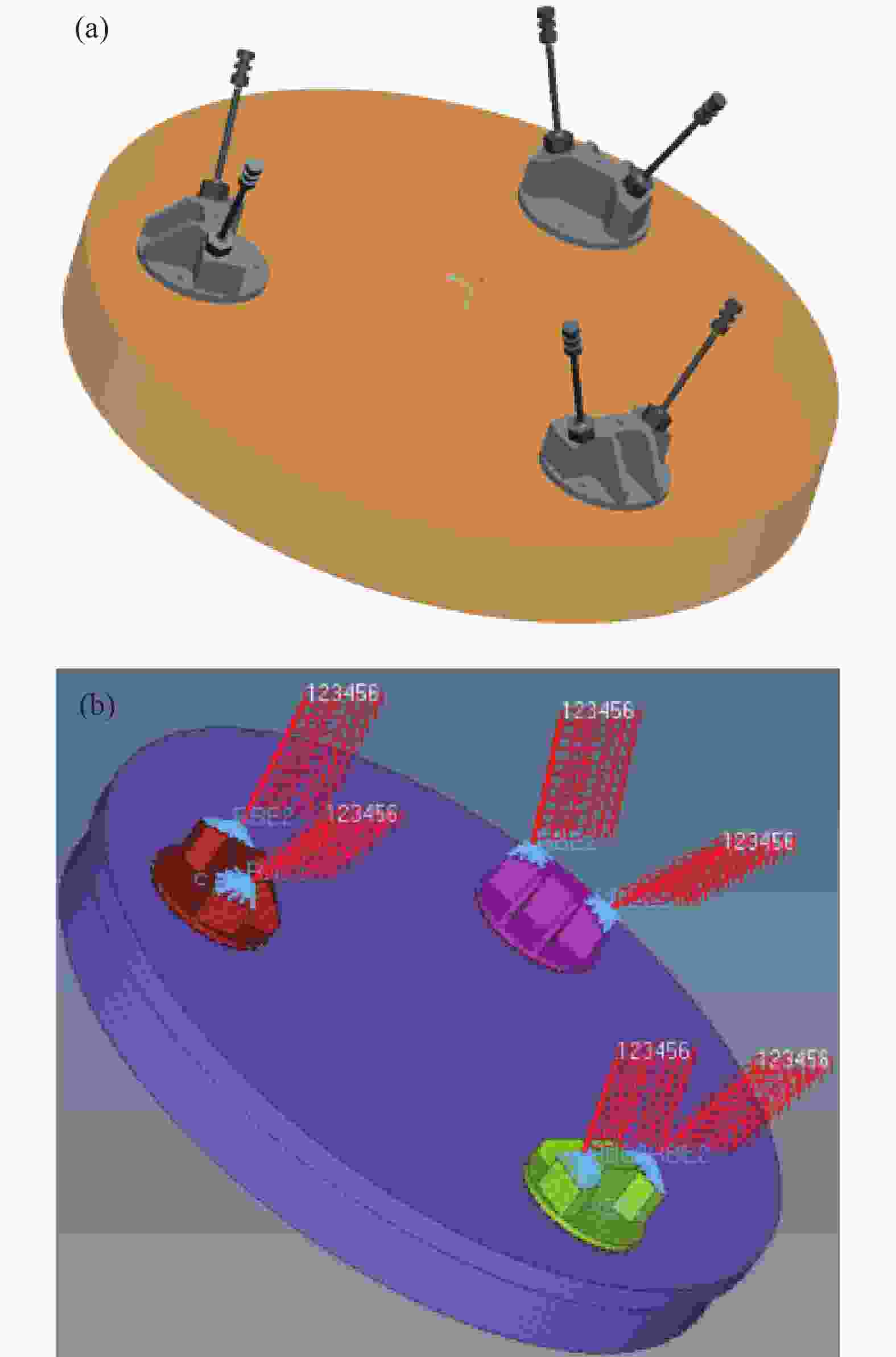

 DownLoad:
DownLoad:
